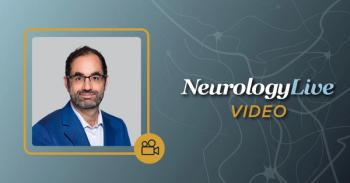
Quick Access to EVT Centers for Acute Stroke Is Greatly Limited, Study Suggests
Data suggests that access to endovascular thrombectomy centers within 15 minutes is limited to less than one-fifth of the population, pointing to a need for improved access and bypass methodologies.
Amrou Sarraj, MD
Recent study data suggest that endovascular thrombectomy (EVT) centers are available within 15 minutes for less than 20% of the population in the United States, pointing to a need for both national and state efforts to improve access to EVT for
The findings revealed state-varied results, with enhanced access most increased by increasing EVT centers or bypassing non-EVT centers to the closest center, though bypass showed more potential for maximizing patients’ direct access to EVT.
All told, flipping the top 10% of non-EVT centers to EVT capable would increase direct access within 15 minutes to an additional 7.5% (n = 2,094,953) nationwide, while bypassing non-EVT centers would result in an improvement in coverage for 16.7% (n = 51,689,614).
The data, which included an assessment of 1941 stroke centers, were collected by Amrou Sarraj, MD, chief, general neurology service, director, vascular neurology fellowship program, and associate professor of vascular neurology, UT McGovern Medical School, and colleagues. The findings were presented in part at the
READ MORE:
Sarraj et al. wrote that the bypass approach “has the added benefit of ease of implementation and requires less time and resources. However, some states indeed demonstrated better access by flipping. This signifies the heterogeneity among different optimization approaches demonstrated based on population density, urban versus suburban areas, and current distribution of EVT-capable centers in different states.”
This, they added, can identify the best approach by state when applied locoregionally, to maximize EVT access in conjunction with the availability of resources to improve local health policy development.
All told, 37% (n = 713) of the total centers assessed were EVT capable, providing direct access within 15 minutes for 19.8% (n = 61,223,826) of Americans and within 30 minutes for 30.9% (n = 95,000,000). Centers were mapped with geo-mapping and defined as non-EVT or EVT with ≥1 reported acute ischemic stroke thrombectomy code in 2017 to Center for Medicare and Medicaid Services. Direct EVT access was calculated from validated trauma-models adapted for stroke.
In Texas, 43% (n = 65) of the centers were EVT capable compared to 57% (n = 87) which were not, providing access within 15 minutes for 22.1% (n = 5,552,520) of the population, which improved to 30.8% when flipping 10% of the hospitals with top population density. Likewise, bypassing improved access to 45.5%.
Similar results were identified in New York, California, and Illinois. In New York, 34 centers were EVT capable compared to 71 which were not, providing coverage within 15 minutes for 20.9% (n = 4,042,987). A flip expanded access to 34.7% (n = 6,725,893) and bypass expanded access to 50.4% (n = 9,756,717).
In California, 74 centers were EVT capable compared to 128 which were not, giving 25.5% (n = 9,496,179) of the population 150-minute access. Flipping non-EVT centers to EVT-capable expanded access to 37.3% (n = 13,875,244) and bypass did so to 53.9% (n = 20,064,882). In Illinois, 33 centers were EVT capable compared to 52 which were not. In total, only 15.3% (n = 1,965,393) had 15-minute access, with a flip expanding access to 21.9% (n = 2,806,613) and bypass expanding access to 34.6% (n = 4,443,632).
Importantly, Sarraj and colleagues noted a number of limitations to the work, namely the lack of simulated outcomes, the hypothetical nature of the results, the liberal inclusive approach of considering a center EVT capable with only a single EVT procedure, and the assumption of every patient’s status allowing for transport to an EVT-capable center. They also noted a need to identify the costs and logistics of conducting a flip to make a center EVT capable and the distribution of populations at high risk for stroke to identify the best flip candidates.
“Strategies to improve current direct access are necessary to achieve optimal clinical outcomes in patients with strokes,” they wrote. “Furthermore, there are no clear data on the current distribution or density of EVT-capable centers in the United States, their coverage areas, and, subsequently, the gaps in patient access to timely thrombectomy.”
REFERENCE
Sarraj A, Savitz S, Pujara D, et al. Endovascular Thrombectomy for Acute Ischemic Strokes: Current US Access Paradigms and Optimization Methodology. Stroke. Published online February 12, 2020. Accessed March 9, 2020. doi: 10.1161/STROKEAHA.120.028850
Newsletter
Keep your finger on the pulse of neurology—subscribe to NeurologyLive for expert interviews, new data, and breakthrough treatment updates.




























